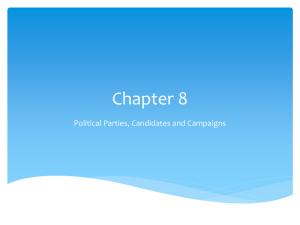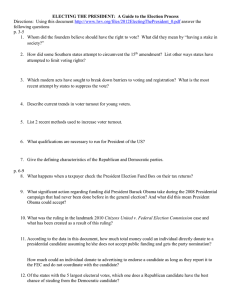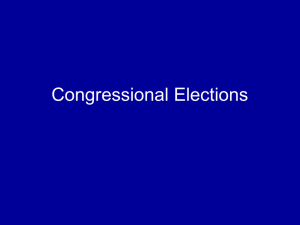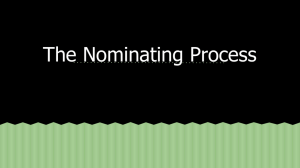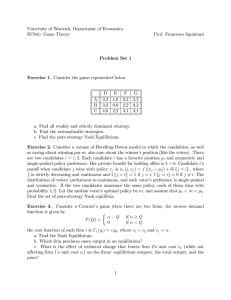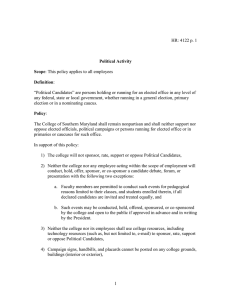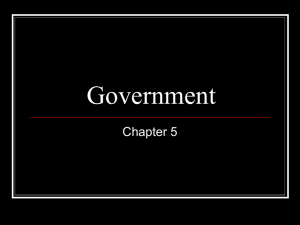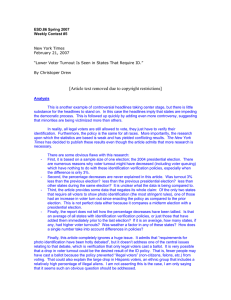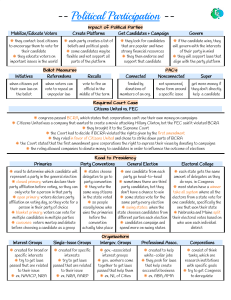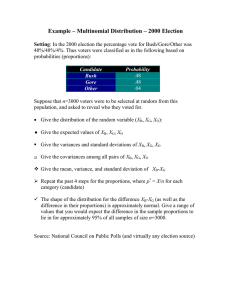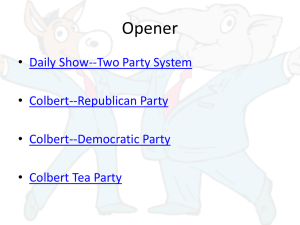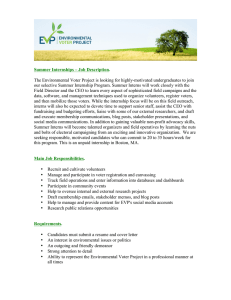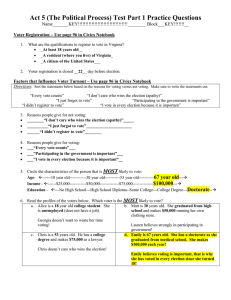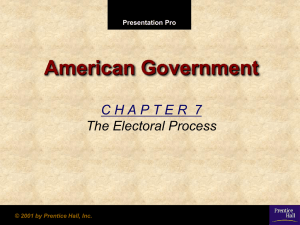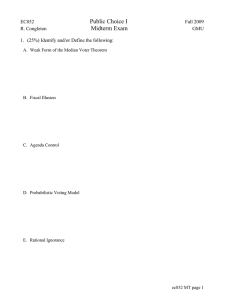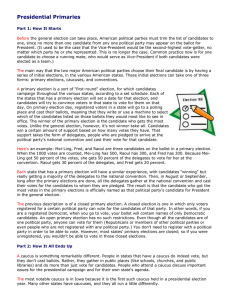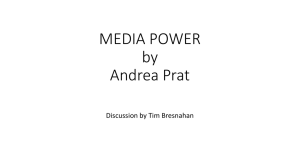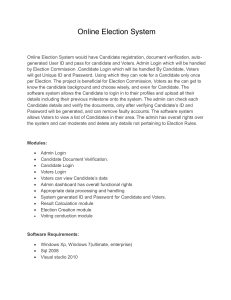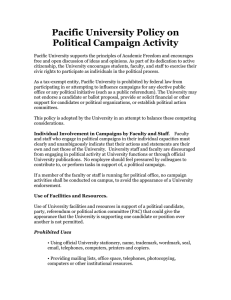Abstract Political public relations is far from a science and candidates... relations practitioners in an effort to gain as much support...
advertisement
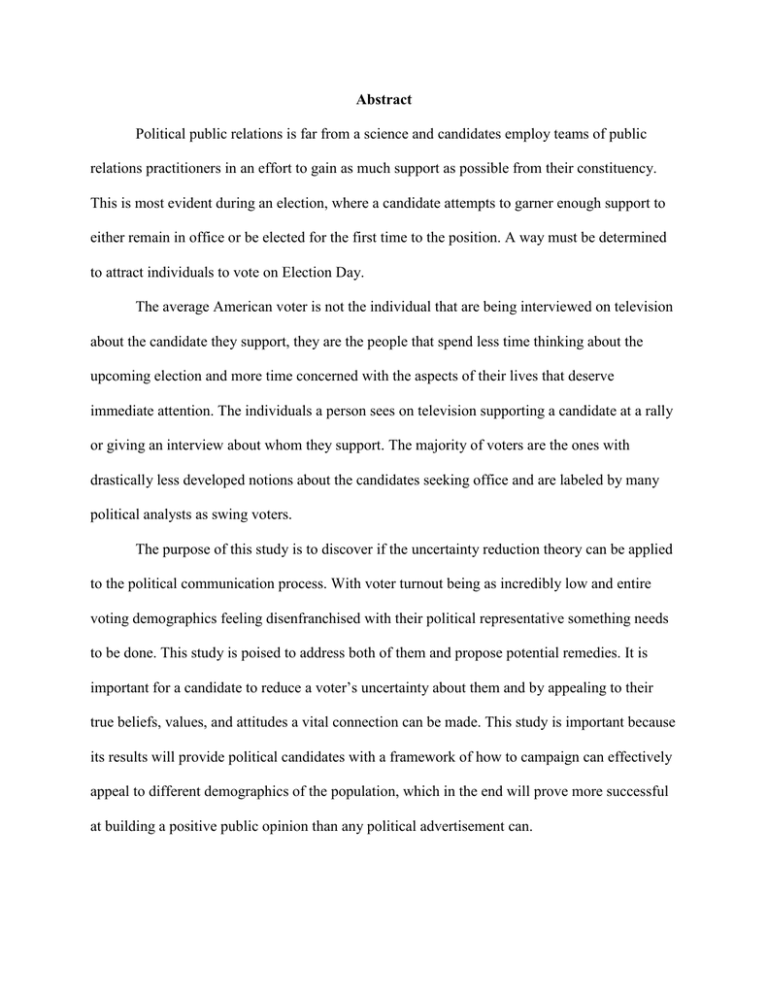
Abstract Political public relations is far from a science and candidates employ teams of public relations practitioners in an effort to gain as much support as possible from their constituency. This is most evident during an election, where a candidate attempts to garner enough support to either remain in office or be elected for the first time to the position. A way must be determined to attract individuals to vote on Election Day. The average American voter is not the individual that are being interviewed on television about the candidate they support, they are the people that spend less time thinking about the upcoming election and more time concerned with the aspects of their lives that deserve immediate attention. The individuals a person sees on television supporting a candidate at a rally or giving an interview about whom they support. The majority of voters are the ones with drastically less developed notions about the candidates seeking office and are labeled by many political analysts as swing voters. The purpose of this study is to discover if the uncertainty reduction theory can be applied to the political communication process. With voter turnout being as incredibly low and entire voting demographics feeling disenfranchised with their political representative something needs to be done. This study is poised to address both of them and propose potential remedies. It is important for a candidate to reduce a voter’s uncertainty about them and by appealing to their true beliefs, values, and attitudes a vital connection can be made. This study is important because its results will provide political candidates with a framework of how to campaign can effectively appeal to different demographics of the population, which in the end will prove more successful at building a positive public opinion than any political advertisement can.
